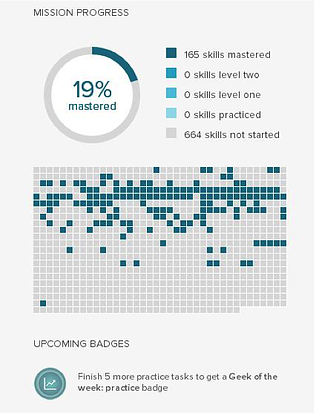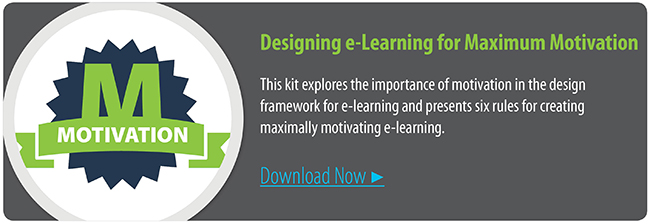Blog
Free Online Courses to Exercise Your Brain this Summer
by Hannah von Bank, relationship management assistant In the past, employers had their pick of often hundreds of qualified applicants for a limited ...

.png?width=1387&height=526&name=hannah(250).png)
Tips for Developing Successful Leadership Training
By Hannah Hunter | April 10, 2014 | Custom Learning | 0 Comments
by Hannah von Bank, relationship management assistant
.png?width=120&height=120&name=hannah(250).png)
In the past, employers had their pick of often hundreds of qualified applicants for a limited number of positions – but that is set to change. Ten thousand American workers reached the age of 65 today and about 10,000 more will reach retirement age everyday for the next 17 years. Baby boomers are retiring in droves and are taking their knowledge and experience with them. To quote this month’s issue of Chief Learning Officer Magazine: “The forecast suggests the talent, skills and knowledge needed will no longer be available via thousands of applicants.”
Is your organization struggling with how to internally develop and retain the skilled leaders necessary for keeping your business successful for years to come? While developing a leadership development curriculum may be daunting task, here are some tips for starting out.
1. Identify crucial leadership skills
 What would your ideal leadership team look like? How would they work together to support your organization? What talent and competencies should they possess? Compare your vision to the current state of your team―can you identify any skill gaps or efficiencies you want to preserve and pass on? Industry and position-specific skills are sure to vary between companies, but some leadership skills are universal, such as:
What would your ideal leadership team look like? How would they work together to support your organization? What talent and competencies should they possess? Compare your vision to the current state of your team―can you identify any skill gaps or efficiencies you want to preserve and pass on? Industry and position-specific skills are sure to vary between companies, but some leadership skills are universal, such as:
- The ability to effectively delegate
- Motivational skills
- Organizational Skills
- Communication Skills
- Ethics and Integrity
- Conflict Resolution
By identifying the skills you need to focus on, you are well on your way to building your curriculum.
2. Interview your Resources
Now that you’ve identified the skills you want to foster, it’s time to gather best practices for applying those skills on the job. A great way to do this is to interview your most successful internal leaders. There are many questions you can ask—here are a few to get you started:
- What do you wish you knew when you started in this position?
- What aspect of your job is most challenging for you? The most rewarding?
- What does ______ skill look like on the job? For instance, how do you motivate your team? What does effective communication mean to your sales associates? How do you make decisions regarding task delegation?
- How do you measure success for yourself and for the employees you supervise?
- What are your best practices for coaching new employees?
3. Organize your ideas
Building out a grid like the one below is a quick way to organize and prioritize all your learning goals, audiences, activities, and timelines in one easy-to-find place:
|
Leadership plan for all staff and volunteers |
||
|
Goal |
Leadership Development Activities |
Timeline |
|
Team leads will learn how to hold effective meetings |
In person training and role-play given by Jasmine, Program Director |
Next Month |
|
Increase ability to work as a team among all staff members |
Have group rotate leadership in community development projects; Executive Director, Carmine, will teach people how to support each other's leadership |
This Year |
|
Increase diversity awareness among all staff |
Ongoing diversity awareness program; bring in an outside facilitator |
Meet monthly throughout this year |
Source: http://ctb.ku.edu/en/table-of-contents/leadership/leadership-ideas/plan-for-building-leadership/main
4. Choose your training methods
As you build out your plan, think about the mix of modalities you are going use to reach your audience. There are a number of methods you can use to motivate and disperse information to your future leaders: mentorship programs, e-learning courses, webinars, seminars, team retreats, classroom training, mobile apps, and professional speakers to name a few. Each modality has unique strengths and weaknesses. When making your decisions, consider:
- Which skills are most crucial to learner success? What skills require the most hands-on practice? An activity-focused e-learning course or a highly interactive in-class training might be best for these skills.
- How can I scale this training for future learners? One-off lessons that don’t need to be repeated might be covered in person through a speaking event or meeting with a supervisor. Training you’ll want to repeat in the future may best be handled through e-learning, on-the-job coaching, or recorded webinars.
- Do my learners need to put this information into memory or do they simply need to know where to find the information if they have a question? A PDF or mobile reference material gives learners the ability to find the information they need quickly and easily.
- Are there outside organizations that can provide this training? Many colleges and professional organizations (like our partner, ASTD) offer proven professional development and software training programs that your employees can take advantage of.
Are you considering implementing or improving upon a leadership development program for your organization? What challenges are you facing?

About the Author: Hannah Hunter
Hannah Hunter is an instructional writer at Allen Interactions. When she’s not sharing her passion for life-long learning, Hannah enjoys painting, experimenting with new recipes, and volunteering as a creative writing tutor for middle and high school students. She also frequently blogs on Allen Interactions’ e-Learning Leadership Blog.
Comments
Would you like to leave a comment?
Related Blog Posts

By: Hannah Hunter | Jul, 2014
Category: Custom Learning

Blog
3 Real-Life Lessons Learned from Difficult On-The-Job Challenges
by Hannah von Bank, relationship management assistant In the past, employers had their pick of often hundreds of qualified applicants for a limited ...
By: Hannah Hunter | Aug, 2014
Category: Custom Learning

Blog
5 Common Missteps In Onboarding Programs
by Hannah von Bank, relationship management assistant In the past, employers had their pick of often hundreds of qualified applicants for a limited ...
By: Hannah Hunter | Sep, 2014
Category: Custom Learning, Strategic Consulting


